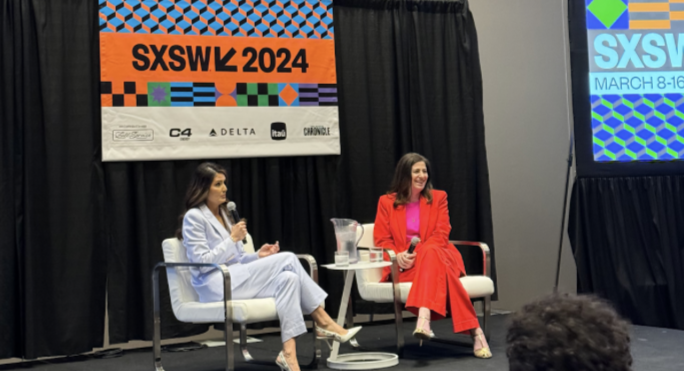Virtual try ons could be the future of online shopping, allowing consumers to try on clothes and accessories virtually before making a purchase, Google and J.Crew have told SXSW Austin.
Google senior director of product management Lilian Rincon said: “We see in the stats that 60% of people return an item, because they thought it was going to look different … there are some gaps we need to address as an industry.”
Returns can be driven by sizing uncertainty, colour discrepancies, and the inability to physically try on a garment, explained Rincon and Danielle Schmelkin, chief information officer at J.Crew Group.
Google Trials, enabling virtual try ons, can alleviate this pain point, Rincon proposed.
“In the past, you probably saw Photoshopping of an image,” she said.
“Google trials is actually using bleeding edge, generative AI technology. And the interesting thing about this is we do a custom photo shoot with real people, men and women of all sorts of different shapes and sizes. To put a finer grain on the technology, this is a type of generative AI, it’s a diffusion based model that is generating every pixel.
“The user chooses a model, and then the output … it’s so accurate.”
Schmelkin noted the increasing use of J.Crew and Madewell’s physical stores as trial and style check hubs, fuelling the transition to online shopping as the new norm.
Focusing on data-driven approaches, she highlighted the importance of understanding consumer behaviours and enhancing the shopping experience across various channels. That includes considering not just the products, but occasions, in search results.
“We’re finding more and more people are getting a lot looser on how they’re searching for things. And we want to make sure you can find what you’re looking for. This helps us tremendously, it helps with search, it helps with our filtering and it helps with SEO tremendously. So someone going on Google could get to that shirt faster.
“When we start touching on personalisation, it’s really to give you the best experience and the best kind of probability to find what you’re looking for. Because if you find it, you might like it. You might think of us next time.”
Rincon added that since COVID, even when shoppers buy in store, they are using search and the online CX to check availability and feel sure of their purchase before they make it.
“We see, for example, that 60% of customers will look up a product to find out that it’s in the store before they go buy it. That’s a pretty high percentage, actually. And this is a new phenomenon, let’s say since the pandemic.
“The other thing that we see at Google is not just in shopping but across the board, people have learned to use ‘Near Me’. So an example that happened to me, this last holiday my Christmas tree base broke, and I needed a Christmas tree. It was making a giant mess. I need a Christmas tree base like right now. And I typed, ‘Christmas tree base near me,’ and I was able to see what are the local hardware stores or whatever that carries something that I want to use. So now that’s become really much more of a habit.”
—
See also:
SXSW Austin 2024: Delta, eos, and Pfizer CMOs on ‘aggressively’ embracing AI
SXSW Austin 2024: Paramount CTO on winning gen AI arms race
SXSW Austin 2024: Meghan Markle and Katie Couric on using your voice and sexism in TV
